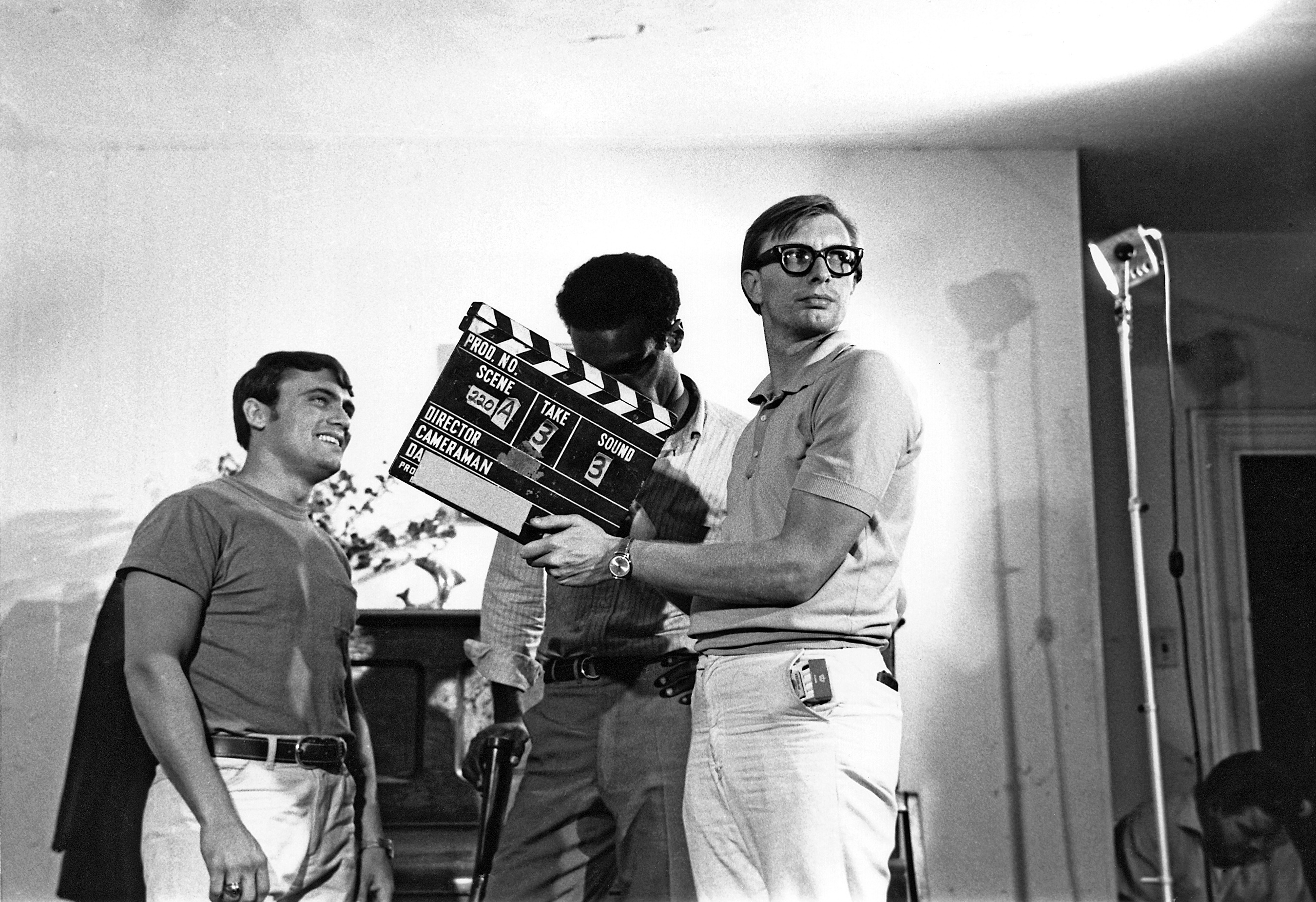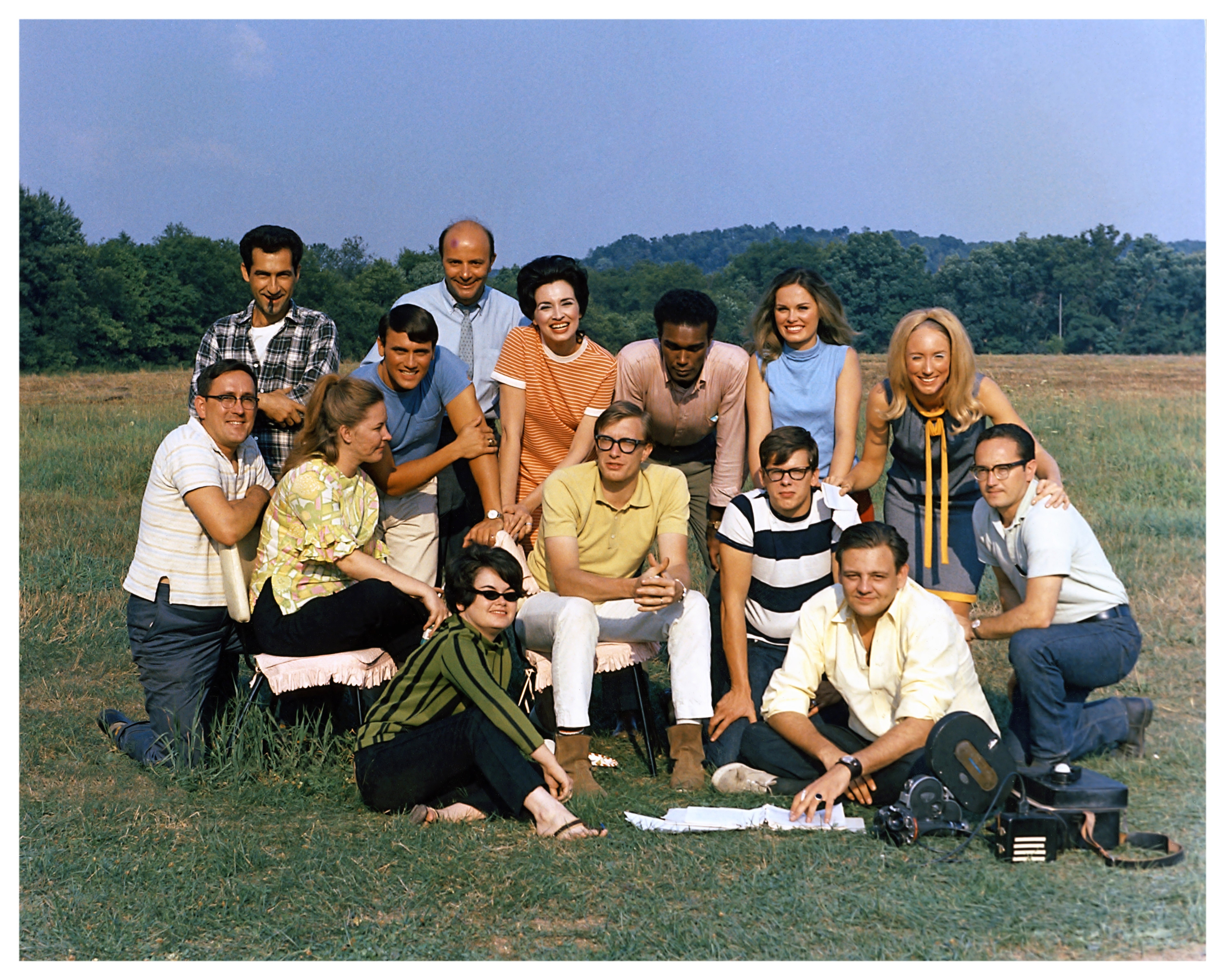Interview with Night of The Living Dead producer Russ Streiner

During the rehearsal period for Night of The Living DeadTM - Remix, co-director Andrew Quick chatted with Russ Streiner, one of the producers of the original film Night of the Living Dead TM (1968). Below are some excerpts from that conversation.
Andrew Quick: How did you get involved with making films?
Russ Streiner: I met George Romero in mid-1959, when he was a student at Carnegie Tech. I was performing in a play in Pittsburg, where I was sharing a dressing room with a mutual friend of George’s and mine. George showed up at our dressing room one evening. However, given the theatrical atmosphere, George decided that he would show up in a black satin cape with a red satin lining, spouting lines from Cyrano de Bergerac. He made quite an impression on the backstage crew. It was emblematic of his flamboyant style when it came to theatrics. When it wasn’t theatrics, George was shy and reserved, but if he could hide behind a theatrical mask, he would. I was trying to make my way in the world as an actor, George had a 16mm camera and he asked me to be in a film he was trying to make called Expostulations. The first day I showed up for filming, I was so intrigued with the whole process, that I wanted to get into film production.
George was also quite a good performer; many people don’t know that about him. We thought it would be amiss if he didn’t do a cameo part somewhere in the movie. The sharp-eyed viewers will see George Romero as Don Quinn in the Washington DC sequence of Night of the Living Dead. George appeared on camera as the lead news reporter. I filmed that sequence because George was in front of the camera.
AQ: Where did the idea for the movie come from? What was your starting point?
RS: At that time, horror films were shown mostly as B movies. There was a TV show here in Pittsburg called Chiller Theatre, which was every Saturday night starting at 11.30pm, showing horror films. Mostly low budget horror films. And we’re looking at these films, and at this time our company had expanded a little bit, John Russo, who came out of the military service, was now working with us as well, we take a look at what’s going on around us, thinking how can we get to do a so called ‘real’ movie, and we look at some of these horror films, and frankly they were not very good, they weren’t very scary. The production values weren’t very good, and we said to ourselves, if we can’t do something that at least achieves that level, how can we go on? So, we decided, almost by default, that a horror film would be our first attempt at a real movie.

AQ: You said that you were drawing from the genre of horror in the US. Were their other influences that you were looking at like comics or anything else from popular culture?
RS: I think in a way we were influenced by the things that were going on around us. Obviously the 60s and mid to late 60s were pretty turbulent in the US and other places. There was civil unrest because of the war in Vietnam, the whole civil rights movement, it was a pretty turbulent time, and I’m sure that those influences came into the collective thought process and creative process. But it was not overt at all. For example, the casting of Duane Jones as the lead in the film, came about simply because Duane Jones was the best actor who auditioned for the part of Ben. He was the best, and that’s why he got the job. The character who was sort of in our minds was a truck driver type, a little bit rough around the edges. But when we saw Duane in his audition for Ben, he was far more gentle, he was an African American man, but way, way more gentle than we imagined Ben to be. The way he delivered the lines persuaded all of us that Duane should be our Ben, and he was. And the rest of that part of the story is history. He did a remarkable job. We knew that there are probably sections of the US where having a black man holed up in a farm house with a white woman, there would be sections of the country that would not be too eager to play our film, but we thought so be it, Duane is the best, that’s who we’re going to cast, and let the chips fall where they may.
AQ: That was quite a radical thing to do in those days.
RS: We didn’t view it as radical. I guess it could be interpreted it that way. We just viewed it that we wanted our low budget film to assemble the best cast we could and give ourselves the best shot we could. The casting of Duane Jones was one of those lucky accidents if you will, that really did pay off. It did have some downsides in terms of places that chose not to play the movie, but the upsides far outweighed the downsides in my opinion.
AQ: In terms of the film making process, was it easy to make, or was it a difficult process?
RS: There were ten of us, and the company that we formed to produce Night of the Living Dead is called Image Ten. We each put up 600 dollars; so we had a kitty of 6,000 dollars to get started in the right direction, and then we had to raise more money as we went along. But we were at least able to get started and were able to show other potentially interested investors what we were doing, what it would look like, and the shape that it was starting to take.
AQ: So, you were showing sections of the film to potential investors before it was finished?
RS: Exactly. And they (the film clips we were showing) were good enough that other people were interested as well. But I must say that the bulk of the other investors were family and friends, it wasn’t like going to a room of studio executives and saying, ‘Hey this is what we’re doing’, it was all much closer to home in terms of investors; friends, family, grandmothers, that kind of thing. We had the very good fortune, because we were self-financed, we had no one looking over our shoulders. We were not encumbered by what a group of studio executives might want to see. We didn’t have any bureaucracy of executives saying you can’t do this you can’t do that, you can’t have a black man in the lead, we didn’t suffer from any of that.
AQ: Were you always going to play Johnny?
RS: Me playing Johnny was a latter-day decision. We had the key cast members together. We had Judith O’Dea as Barbra. We had Karl Hardman and Marilyn Eastman as Harry and Helen Cooper. We had Duane Jones as Ben. But we still did not have Johnny and it was getting closer and closer to the first day of production, and the first day of production was Johnny and Barbra coming to the cemetery, and someone said, I don’t remember who, ‘Why don’t you just play Johnny?’ and I said ‘OK! I’ll play Johnny!’ I was kind of just there. Judith O’Dea and I looked enough alike that we could pass as brother and sister which was the icing on the cake. Little did I know what I was getting into, but I wouldn’t change one minute of it.
Night of The Living Dead - Remix is at the Playhouse 18 Feb - 22 Feb 2020.
Posted in PRODUCTIONS